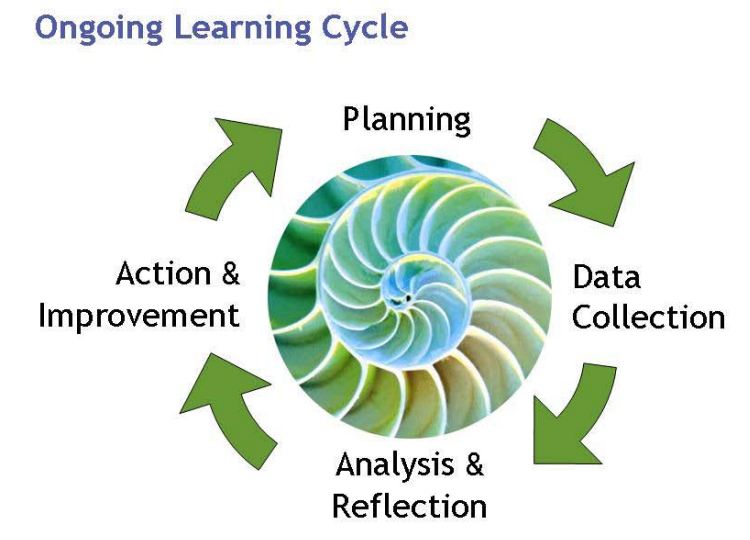Lately, I’ve been busy designing graphics and diagrams to use in next week’s eStudy with Agata Jose-Ivanina.
Sometimes the best way to explain a complicated topic is to break it down and display the little pieces and how they relate to each other in a simple graphic.
Our dashboard automation process is one example where explaining the process through diagrams will (hopefully!) make a big difference for our students.
Evaluation is another example in which graphics can help evaluators explain the process to stakeholders.
So how do evaluators visualize evaluation?
Is evaluation an ongoing cycle or a series of linear steps?
How do you communicate this evaluation process to the program staff? Is the layout of your graphic connected to the evaluation’s purpose and goals?
Let’s look at a few examples.
Cycles…?
An evaluation cycle implies that evaluation is an ongoing process where data is continually used for learning and decision making.
Perhaps displaying evaluation cycles is most appropriate when conducting formative evaluations or evaluations where organizational learning is a high priority.
… or Steps?
On the other hand, evaluation steps imply that you’re building towards something.
Perhaps there’s an end goal or final step.
In the examples shown above, the final step is to “use results” or “publish.”
Evaluation steps are probably most appropriate when conducting summative evaluations where there’s a one-time final report.
In both cases, pictures matter.
Your Turn
How do you visualize the evaluation process?
Do you have additional examples to share?








4 Comments
I see evaluation (as most things in life) as cyclical. I’m really challenged to see anything as strictly linear, but agree that there are instances where a linear layout may better communicate a process that has a more definite beginning and end (although my brain would still be seeing the iterative, back-and-forth potential within and between each of the steps). Looking forward to your course next week.
Is it wrong to answer ‘both’? The whole process is a cycle, made up of several distinct steps. But within those steps, it is linear.
Using the CDC example above – the first step in the cycle in engage stakeholders. But within that step, there is a linear process.
I also see it as both. For a particular set of evaluation questions, you you go through a series of steps to get the information. Then hopefully the results are used in further developing the program and spread to others who are working on similar goals, those results are evaluated, and more is learned. Ideally, as the cycle continues, we get better solutions to the problem.
I don’t think there is a right or wrong. I think evaluation is cyclical at times, linear at times, and quite frankly…just plain jumps around at times! I like this collection of eval graphics (makes me want to go searching for even more). I regularly share the CDC and UWEX models with my grad students.